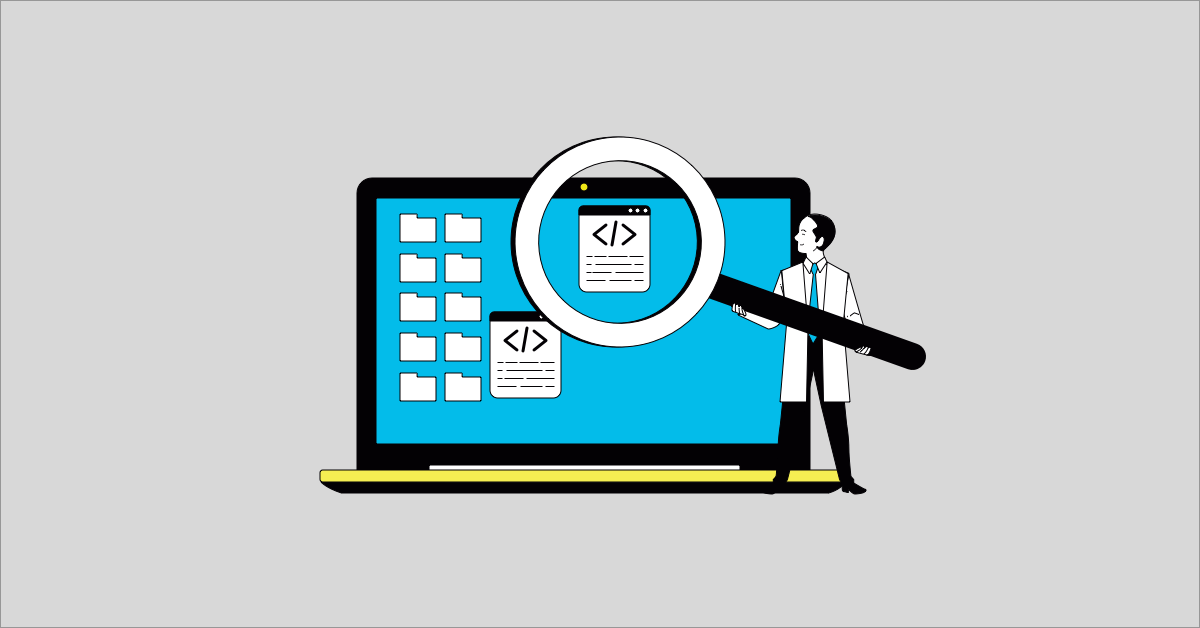A Guide to Automated Regression Testing Software
Author: The MuukTest Team
Published: April 14, 2022

Table of Contents
In the fast-paced world of software development, releasing high-quality products quickly is paramount. But how do you ensure that new features don't introduce bugs or break existing functionality? Automated regression testing software is the answer. It's your quality assurance superhero, systematically retesting your application after every code change.
Regression testing ensures that your application continues to work as designed after any new fixes or updates. These days, most software changes are made in response to user feedback or a change in business requirements. That makes regression testing even more important—if your application isn’t regression tested, every new change could introduce bugs or quirks that only appear under specific circumstances.
Automated regression testing can help to eliminate human error and ensure that every change is thoroughly integrated. It also saves substantial amounts of time and energy and will even boost the morale of your dev team.
To find out how this works, let’s take a closer look at what regression testing is, then how and why you should start automating regression testing in your development process.
Automated Regression Testing Software
Regression testing is a type of software testing that aims to find and eliminate bugs in newly developed features or in old features that are being reintroduced into the new working software. The term “regression” comes from the idea that the test prevents a reversion to a previous, known state.
Regression testing may be done before or after a software release but is performed whenever changes or bug fixes are implemented to the software that may affect its functionality. These can be changes to code, added functionality, or changes to the environment.
The goal of regression testing is to make sure that the software still performs as expected when it leaves the developer’s hands and that any bugs that may have been introduced during the software’s lifecycle are detected and fixed.
So, regression testing in software helps ensure that your changes won’t harm the rest of the software going forward. Unfortunately, it’s a lengthy, repetitive, and tedious process and tends to be considered a necessary evil, though it can get overlooked.
Types of Regression Testing
Different types of regression tests are applied depending on the cause of the requirement.
- Unit regression testing approaches individual units of code. This is a narrow approach that focuses on a single change. For example, when a bug fix is tested for functionality, this would involve a unit test on the bug fix itself.
- Regional testing checks the overall flow of code between affected units. This would be any test that runs on the changed unit as well as any affected areas it occupies.
- System or Full testing checks the entire application. This is the most universal regression test that considers the changed part, the affected modules, and the remaining application as a whole.
As it may seem, this can become very complex and resource-intensive. Because of this, it’s easy to make mistakes or lose consistency with regression testing. However, automated regression testing can go a long way to reducing that headache.
Automated Regression Testing
Regression tests are expensive and time-consuming processes. However, automated regression testing can significantly increase the throughput of your tests and reduce the risk of making catastrophic mistakes. It also has several other benefits:
- Scalability – Testing gets harder as your code gets longer. Regression testing automation allows you to scale almost effortlessly and keep up with the growing demands of your growing applications.
- Reuse – Tests can be reused in automation, so the effort only has to be put in once. This is a much more efficient method than writing the tests every time you need them.
- Test more – Being able to recycle tests means you can spend more time writing new ones for other purposes.
- Save boredom – Regression testing is cumbersome and boring. The less you need to do, the happier and more stimulated your team will be.
How to Automate Your Regression Tests
Writing automated regression tests is a great way to increase the efficiency of your regression, but how do you make those tests run? Here are the four main steps in the automation process.
Identify suitable candidates for automation.
First, it’s necessary to outline the specific component that will change, and to what extent, then identify how the change will impact the system and any regions it will affect. Risk assessment is useful at this stage, pointing out all the ways in which the change could cause harm to the application.
Write the tests
This is easier said than done. Once you know what you’re testing, it’s best to develop a testing and reviewing strategy – something that we will go into a little more in the next section – but with this in place, it’s time to write the tests you want to automate. Once the tests are written, they must be assigned to execution scripts for automation. This will be your test suite.
Execute the tests
If your reporting system is well designed, it will be flexible enough to handle high-frequency testing. This is the time to figure out how well your tests are designed and whether they can be reused. All this information will be useful in the next stage.
Review
At the planning stage, you should have decided on all the metrics you will use to assess the success of the testing. For example, did the test achieve what you wanted it to achieve?
There can be additional steps in between these, and your process may be slightly modified to fit your specific needs, but typically the process follows these stages. To do it right every time, however you choose to do it, follow some standard best practices.
Choose the Right Automated Regression Testing Software
Selecting the right automated regression testing software is crucial for efficient and effective testing. A well-chosen tool can significantly improve your team's productivity and the quality of your software. This section guides you through key considerations to make an informed decision.
Assess Your Project Requirements
Before evaluating any tools, take the time to understand your project's specific needs. Consider the size and complexity of your application, the programming languages and frameworks used, and your team's technical expertise. Regression testing is essential after any software changes—whether it's updates, new features, or bug fixes—so choose a tool that aligns with the frequency and scope of your testing needs. Clearly defining your requirements upfront will help you narrow down the options and select a tool that effectively addresses your specific challenges.
Evaluate Tool Features and Integrations
Once you understand your project requirements, evaluate potential tools based on their features and integrations. Look for tools that offer comprehensive test coverage, including both functional and visual testing. Many tools focus solely on the underlying code and may miss critical visual bugs. Consider factors like ease of test creation and maintenance, speed of test execution, self-healing capabilities, and the availability of reliable technical support. Seamless integration with your existing development and CI/CD workflows is also essential for streamlined testing processes. A tool that fits well within your current ecosystem will minimize disruption and maximize efficiency.
Explore Open-Source and Commercial Options
The market offers a diverse range of regression testing tools, catering to various technical skill levels and budgets. Explore both open-source and commercial options to find the best fit for your team. Open-source tools like Selenium often require coding skills, while commercial tools may offer no-code or low-code options, making them more accessible to teams with limited coding experience. While no-code tools are generally easier to use, they may have limitations in terms of customization and flexibility. Commercial tools often come with dedicated support and advanced features, but they can be more expensive. Carefully weigh the pros and cons of each option to determine the best balance of cost, functionality, and ease of use for your specific needs. Consider factors like the size of your team, your budget, and the long-term scalability requirements of your project.
Best Practices in Regression Testing Software
The list of regression testing automation best practices can be almost endless, depending on whom you ask. Fortunately, we’ve condensed most of them into four useful pointers, which, when followed, should boost the power of your test data and tests themselves.
The Strategy
In the planning stage, decide on your execution script language, gather data, plan the time the process will take, and have a design for the review stage afterward. Finally, decide on how many iterations you’ll be running.
Run Tests You Know Will Fail
Tests that are meant to fail are just as useful as tests that you expect to pass. Therefore, it’s important to make sure the code fails as it’s supposed to. In the same manner, repeat tests that succeed. However, tests may not produce successful results the same after multiple iterations, and if that’s the case, you need to know why.
Have a Solid Foundation
One of the best practices for regression testing automation is to make sure your test data are substantial and accurate. Test quality increases significantly with an increase in the quality of your test data. Therefore, strong data preparation practices should be implemented in the planning stage.
The volume and variation requirements for regression test data are very variable, so it’s useful to maximize both for your libraries to function optimally.
Review and Improve
The importance of agreed-upon and appropriate metrics to assess the testing process and quality cannot be overstated. Spend extra time in the planning stage to build a review framework that you can efficiently rely on and use to improve future iterations. Regression testing automation will speed things up, but it will still take some time to perfect the process.
This is an important skill to learn for any stage of development, but it greatly improves the efficiency of testing and, with continued improvement, will build an automation regression testing toolbox you can rely on.
Overcome Common Challenges in Automated Regression Testing
Automated regression testing isn't without its hurdles. Let's explore some common challenges and how to address them effectively.
Address Test Flakiness
Flaky tests are the bane of any automated testing process. These tests pass or fail intermittently without code changes, leading to confusion and wasted time. Pinpointing the root cause is key. Often, flakiness stems from timing issues (like network latency), dependencies on external systems, or improper test setup. Thorough debugging and reviewing test dependencies can help stabilize your tests and restore confidence in your results. For more insights into addressing these challenges, take a look at this helpful resource on common regression testing challenges.
Manage Test Data and Environments
Consistent and reliable test data is the foundation of accurate regression testing. Inconsistent data leads to unreliable results, while poorly configured environments can cause tests to fail outright. Implement clear strategies for data management, such as using version-controlled test data and ensuring environment parity. This ensures your tests run smoothly and provide consistent feedback. Learn more about managing test data and environments in software projects.
Balance Automation with Manual Testing
While automation increases efficiency, it's not a one-size-fits-all solution. Some testing scenarios, like exploratory testing or usability assessments, benefit from human insight. A hybrid approach—combining automated regression testing with manual testing—allows you to leverage the strengths of both. Automation handles repetitive tasks, freeing up your manual testers to focus on complex scenarios and user experience, ultimately ensuring comprehensive test coverage. This article on regression testing challenges offers additional perspectives. Consider your project's specific needs and find the right balance for optimal results.
Measure Automated Regression Testing Effectiveness
After implementing automated regression testing, how do you know if it's working? By tracking the right metrics, you can demonstrate the value of your testing efforts and identify areas for improvement. Measuring effectiveness isn't about checking boxes; it's about ensuring your automated regression testing strategy delivers real ROI.
Track Key Performance Indicators (KPIs)
Identifying key performance indicators (KPIs) is crucial for understanding how well your automated regression tests are performing. These metrics offer insights into different aspects of your testing process, helping you pinpoint areas for improvement and demonstrate the value of your efforts.
Conclusion
Regression testing automation takes away the majority of the hassle from regression testing. In addition, it can reduce errors in the process while freeing up time to work on more exciting areas of development.
Though automated regression testing speeds things up, it’s not a totally hands-off approach. However, planning and following some best practices can vastly improve your regression experience and results.
Frequently Asked Questions
-
What is regression testing?
Regression testing is a process that ensures continued peace between evolution and stability in software systems. More than just another phase in the software development lifecycle, regression testing ensures that software behaves as expected before and after teams make changes. This process involves running previously executed test scenarios to guarantee that any modifications to the existing code have not adversely impacted the system's operation. -
What is the aim of regression testing?
While all forms of testing contribute to the software's quality, regression testing has a unique role. It does not aim to explore or discover new features but instead seeks to validate existing features and components. Therefore, it acts as a gatekeeper for defects introduced through new code deployments.
-
What are some of the challenges of regression testing?
Like all aspects of software development, regression testing has its unique challenges. Frequent hurdles that can hinder the effectiveness of regression testing include intricate test environments, time constraints, and having the right tools.
Related Posts:

Unit Testing: 6 Best Practices for QA Success
Unit testing is essentially the process of isolating the smallest functional components of your code and making sure they’re working properly. It’s a critical part of the development process and,...

Automated Functional Testing Software: Definition, Benefits, and Best Practices
Software that breaks after an update frustrates users and costs time. Automated functional testing software helps prevent that by automatically checking that your application’s key features still...

Automated Regression Testing: A Practical Guide
Learn how to balance manual and automated regression testing to optimize test coverage and efficiency, ensuring your software remains reliable and high-quality.
%20(1).png?width=150&height=69&name=MuukTest-logo---light-background%20(3)%20(1).png)

